Ever since we bought our new house I’ve been meaning to go down to the city archives and look up our address to see if any old photographs existed of our house. A couple of days ago, somebody told me that the city archives have a website where you can do just that from the comfort of your own home. And I immediately began planning this blog post, in which I go around our neighborhood and take then-and-now photos to match the ones in the archive. So welcome to a trip down memory lane and a glimpse of the Schinkelbuurt of yesterday.
I was utterly delighted to find that there did indeed exist an old photo of our house, although not from the 1920’s when it was built (and we are told it functioned as a bakery), but from the 1970’s, when apparently it was leading a fascinating life as “Barkway Antiques.” On the top is our house as it is now, and on the bottom is the archive photo.
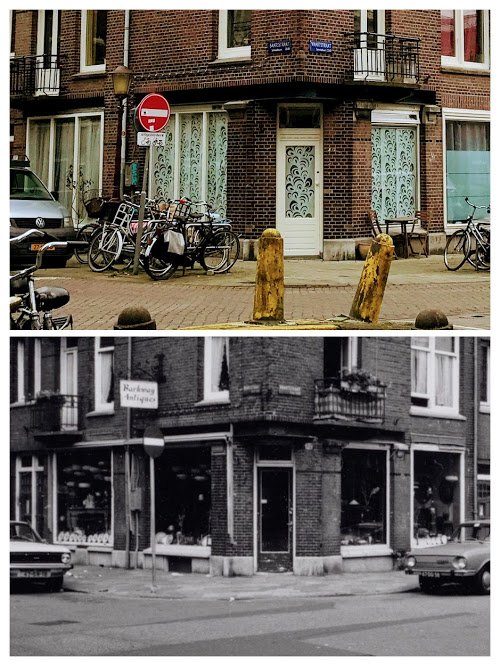 I’ve actually zoomed in on the photo to show the house (mostly windows) that belongs to us; here’s the whole building.
I’ve actually zoomed in on the photo to show the house (mostly windows) that belongs to us; here’s the whole building.
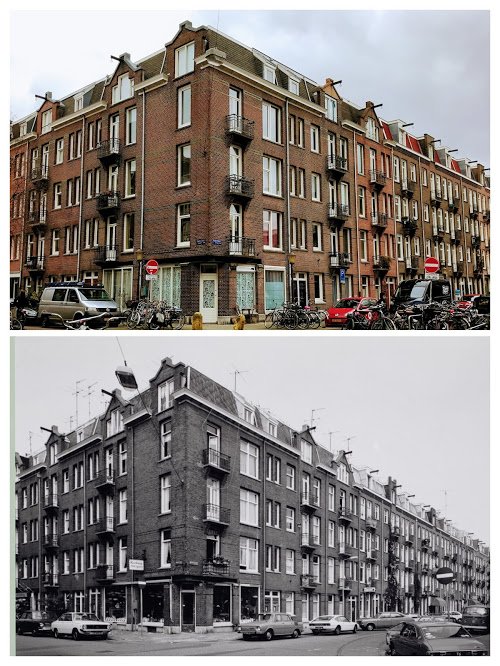
While the structure of the building is unchanged, there are some interesting differences in the photo. For instance, notice all the TV satellite antennae. In the age of broadband and Netflix, nobody needs them anymore. Weirdly, those antique maroon lamp posts in the top photo that look 100 years old aren’t there in the old photo (scroll back up to the first two, and you can see the lamp post just to the left of the red sign); I guess they are a modern addition to make the neighborhood look more picturesque, or possibly a recreation from a previous time.
But the biggest difference to me (from the perspective of the person who lives here) is that in the earlier photo there isn’t a bicycle to be seen, whereas now there are dozens of parked bicycles, and many more I cropped out of the photo. Interestingly, this is photographic evidence of a change that took place in Amsterdam during and shortly after this time period; widespread public protests and activism led to the reclaiming of the streets from cars. Large parking lots gave way to public green areas, and a network of bicycle paths completely (and intentionally) changed the transportation landscape of the city, creating the paradise of bicycles that is the Amsterdam we know and love today.
This next photo is the view from my bedroom window. The photographer died in 1959, so I guess it was taken sometime before then. Aside from the growth of some very nice trees, there’s not a lot that has changed; even that top row of curtains is the same.
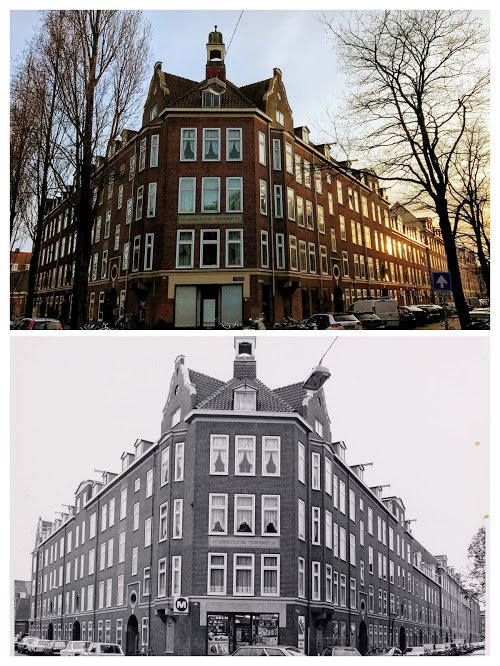
Just down the street from our house is the glorious Schinkel, the river-turned-canal that gives Schinkelbuurt its name. It appears a lot wider in my photo than in the bottom one, which dates from 1927. I am not entirely sure whether the canal has been widened (very possible) or I just couldn’t find the exact same angle.
One of the things that I learned while doing this little project is that it is NOT EASY to find that elusive perfect angle that matches the one in the old photo; in fact, many of these old photos seem to have been taken from the middle of streets which are now far too busy for someone to safely stand in the middle of the road snapping photos. This one says it’s taken from the Zeilstraat bridge over the Schinkel. So is mine, but I was standing on the sidewalk of the bridge, leaning over the railing.
There are no boats in my photo, compared to quite a lot in the 1920’s photo. I think there may be less traffic on the canal than there used to be, and it happened to be a quiet day, but there continue to be quite a lot of boats that use it, and the bridge from which I took the photo can still be raised to allow taller boats through.
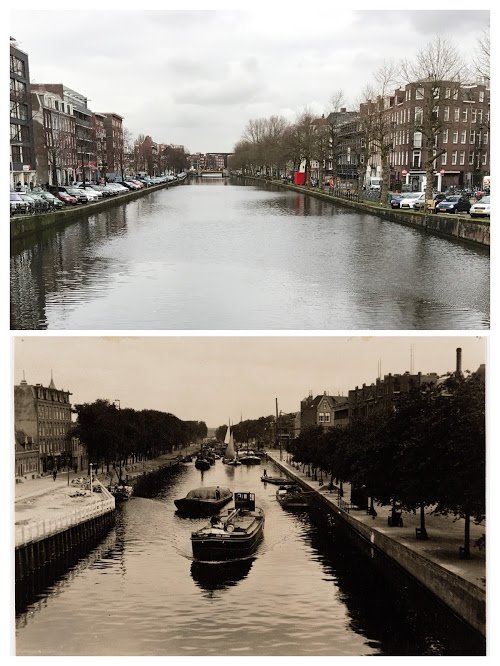
Finally, and perhaps most delightfully, I found this lovely old photo of the gelateria around the corner (which just re-opened today for the ice cream season; if that’s not a sign that winter is over, I’m not sure what is). Apparently the place used to be “Buchanan’s Black & White Whisky” back in 1920. All the details are there, from that wonderful inverted beehive column to the red brick detailing around the door frame.
Strangely enough, in the 1920 photo you can see an old fashioned lamppost like the ones that had disappeared in the first 1970’s photo in front of my house, and reappeared in the present. But the 1920’s lamppost is gone from in front of the ice cream shop now. So I guess they are authentically old after all; perhaps they’ve just been moved around.
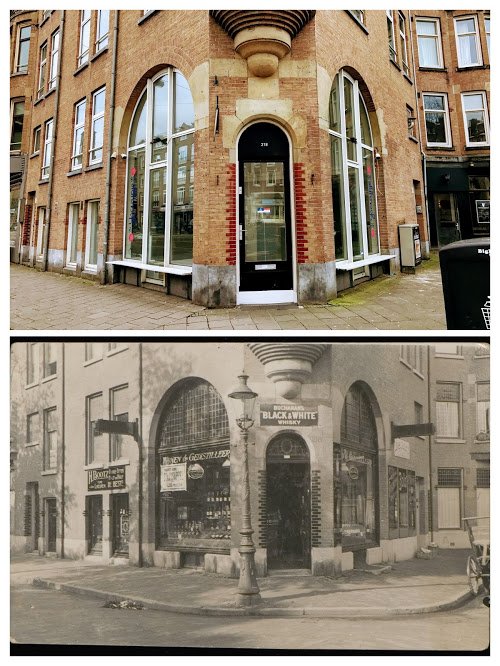
I hope you’ve enjoyed our little jaunt through the Schinkelbuurt of yesteryear. If you want to see more vintage photos of Amsterdam, here’s a nifty little slider courtesy of the city archives. You can also go to their website and type in your own Amsterdam address (try just the street name if nothing comes up for your house number) to find out what your neighborhood looked like 50 or 100 years ago.
Very cool post!